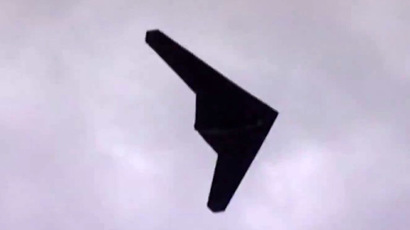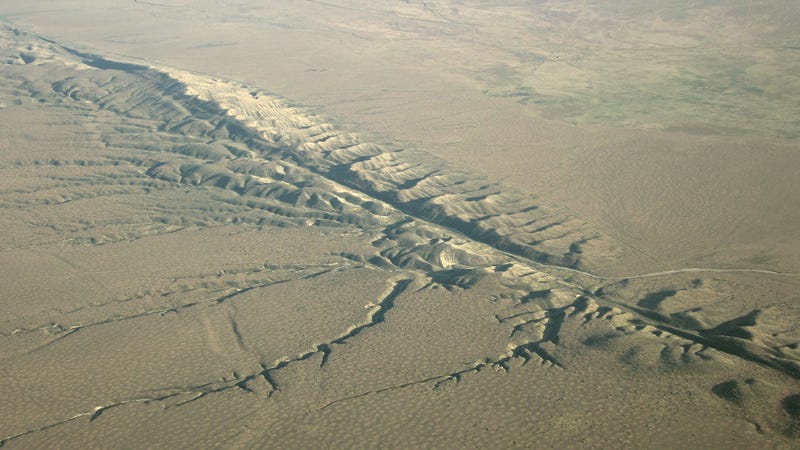Exterior design with new electro-look
"Generation EQ is hot and cool," says Gorden Wagener, Head of Design at Daimler AG. "Its fascination lies in a reinterpretation of our design philosophy of sensual purity, the aim being to create an avant-garde, contemporary and distinctive electro-look. At the same time, the design of the visionary show car, which has been reduced to the essentials, reveals an alluring progressivity."
The monolithic basic form of "Generation EQ" unites the genes of an SUV with the dynamic character of a coupé and a dash of shooting brake at the rear end. The squat, elongated greenhouse gives rise to muscular-purist proportions. The new electro-look is the result of a flowing transition from the gleaming black bonnet across the windscreen to the dark-tinted panoramic roof – an exciting contrast to the alubeam silver paintwork.
Scarcely visible body panel joins, concealed windscreen wipers, cameras instead of exterior mirrors and an absence of conventional door handles emphasise the stretched, dynamic silhouette, making the SUV crossover appear as a unified whole while reducing its air resistance. An intentionally reduced side view, broad shoulders and large 21-inch light-alloy wheels make for a dynamic presence even before the vehicle moves off.
Driver-oriented cockpit with new electro-look
The focus of the driver-oriented cockpit is on simple, touch-based controls with a new electro-look consistently reflecting the exterior styling. The asymmetrical design of the instrument panel with its large, floating wide-screen display is tailored to the driver. The innovative, digital user experience differentiates "Generation EQ" from the familiar control logic in today's vehicles, while giving a peek into the future of user interaction at Mercedes‑Benz.
Interior with new, touch-based controls and no knobs
The interior of "Generation EQ" is characterised by contemporary luxury, this finding its main expression in an all-new user interface, which combines emotive appeal with intelligence and user-friendliness while dispensing with traditional switches and knobs, except for the electric seat adjustment typical of Mercedes. Two of the three narrow spokes on the steering wheel are provided with touch controls, which are integrated into OLED displays (OLED = organic light emitting diode ). They indicate icons and symbols in the respective menus. The driver can swipe through the various menus and confirm their selection with a click.
The 24-inch (53 x 11 cm) TFT high-definition wide-screen display presents all the relevant information, such as speed, range, driving data or navigation and map details. The innovation is apparent from the differentiation between a highly reduced and a complex display, including intermediate stages. Whether there is a low information density with a very clean look to the display, or whether extra content is on view, is left to the driver's personal preference.
User interface design with individualised content
The information density can be increased step-by-step from a digital display and built up into a single- or dual-tube instrument containing more detailed information and feedback on speed and range. These modular displays allow the content to be individualised. An attractive user interface design is ensured by, among other things, a world of colours in electric blue, white and rose gold – the colours of the instrument displays adapt, depending on driving mode or charging process, to allow fast and intuitive recognition.
Bordered in rose gold, the centre console appears to float in space: dispensing with mechanical controls, it is equipped with touch-sensitive elements. Similarly to the touch controls on the steering wheel, the driver can use a finger to operate the automatic climate control and the infotainment system. As "Generation EQ" is devoid of conventional exterior mirrors, cameras are used to project an image of the traffic behind onto integrated displays in the doors. Both the door openers and the electric window lifters are touch-controlled.
Avant-garde, functional interior
"Generation EQ" comes with four individual seats. The reduced volume, impression of floating in space and avant-garde seat upholstery layout make for a visual lightness. A tailored sound experience is provided by speakers integrated into the head restraints. The side bolsters are covered in light-white leather, while perforations with a pixel rain look reveal a view of particles in rose gold. Stitching with a PCB look on the deep-brown centre sections produces an exciting contrast. TFT monitors for rear-seat entertainment are integrated into the front backrests.
2016 2017 Test Drive Concept Review
"Generation EQ is hot and cool," says Gorden Wagener, Head of Design at Daimler AG. "Its fascination lies in a reinterpretation of our design philosophy of sensual purity, the aim being to create an avant-garde, contemporary and distinctive electro-look. At the same time, the design of the visionary show car, which has been reduced to the essentials, reveals an alluring progressivity."
The monolithic basic form of "Generation EQ" unites the genes of an SUV with the dynamic character of a coupé and a dash of shooting brake at the rear end. The squat, elongated greenhouse gives rise to muscular-purist proportions. The new electro-look is the result of a flowing transition from the gleaming black bonnet across the windscreen to the dark-tinted panoramic roof – an exciting contrast to the alubeam silver paintwork.
Scarcely visible body panel joins, concealed windscreen wipers, cameras instead of exterior mirrors and an absence of conventional door handles emphasise the stretched, dynamic silhouette, making the SUV crossover appear as a unified whole while reducing its air resistance. An intentionally reduced side view, broad shoulders and large 21-inch light-alloy wheels make for a dynamic presence even before the vehicle moves off.
Driver-oriented cockpit with new electro-look
The focus of the driver-oriented cockpit is on simple, touch-based controls with a new electro-look consistently reflecting the exterior styling. The asymmetrical design of the instrument panel with its large, floating wide-screen display is tailored to the driver. The innovative, digital user experience differentiates "Generation EQ" from the familiar control logic in today's vehicles, while giving a peek into the future of user interaction at Mercedes‑Benz.
Interior with new, touch-based controls and no knobs
The interior of "Generation EQ" is characterised by contemporary luxury, this finding its main expression in an all-new user interface, which combines emotive appeal with intelligence and user-friendliness while dispensing with traditional switches and knobs, except for the electric seat adjustment typical of Mercedes. Two of the three narrow spokes on the steering wheel are provided with touch controls, which are integrated into OLED displays (OLED = organic light emitting diode ). They indicate icons and symbols in the respective menus. The driver can swipe through the various menus and confirm their selection with a click.
The 24-inch (53 x 11 cm) TFT high-definition wide-screen display presents all the relevant information, such as speed, range, driving data or navigation and map details. The innovation is apparent from the differentiation between a highly reduced and a complex display, including intermediate stages. Whether there is a low information density with a very clean look to the display, or whether extra content is on view, is left to the driver's personal preference.
User interface design with individualised content
The information density can be increased step-by-step from a digital display and built up into a single- or dual-tube instrument containing more detailed information and feedback on speed and range. These modular displays allow the content to be individualised. An attractive user interface design is ensured by, among other things, a world of colours in electric blue, white and rose gold – the colours of the instrument displays adapt, depending on driving mode or charging process, to allow fast and intuitive recognition.
Bordered in rose gold, the centre console appears to float in space: dispensing with mechanical controls, it is equipped with touch-sensitive elements. Similarly to the touch controls on the steering wheel, the driver can use a finger to operate the automatic climate control and the infotainment system. As "Generation EQ" is devoid of conventional exterior mirrors, cameras are used to project an image of the traffic behind onto integrated displays in the doors. Both the door openers and the electric window lifters are touch-controlled.
Avant-garde, functional interior
"Generation EQ" comes with four individual seats. The reduced volume, impression of floating in space and avant-garde seat upholstery layout make for a visual lightness. A tailored sound experience is provided by speakers integrated into the head restraints. The side bolsters are covered in light-white leather, while perforations with a pixel rain look reveal a view of particles in rose gold. Stitching with a PCB look on the deep-brown centre sections produces an exciting contrast. TFT monitors for rear-seat entertainment are integrated into the front backrests.
2016 2017 Test Drive Concept Review






